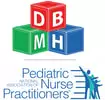Generalized Anxiety Disorder
|
Characterized by...
|
Differential:
|
Anxiety Assessment & Screening
Screening tools:
- Preschool Anxiety Scale (adapted from Spence)
- Spence Children's Anxiety Scale
- Screen for Child Anxiety Related Disorders (SCARED) - CHILD form (free) / auto-scoring version
- Screen for Child Anxiety Related Disorders (SCARED) - PARENT form (free) / auto-scoring version
- GAD-7 (pre-teen through adult)
Treatment Models
|
Psychotherapeutic:
Cognitive behavioral therapy (CBT) Exposure therapy Acceptance and commitment therapy Intolerance of uncertainty therapy Motivational interviewing |
Pharmacological:
Selective serotonin reuptake inhibitors (SSRI) Anti-anxiety drugs: Buspirone (long-term) or benzodiazepines (fast-acting) |
Articles
- Cognitive Behavioural Therapy for Anxiety Disorders in Children and Adolescents (James, et al, 2015)
Resources
|
Organizations
For Professionals:
For Patients/Caregivers:
|
